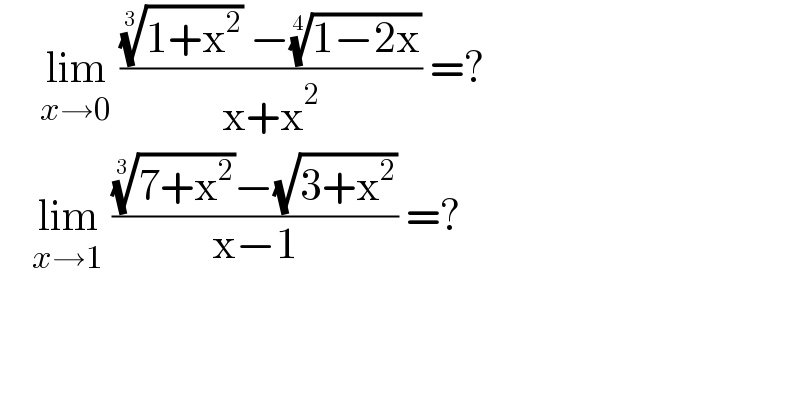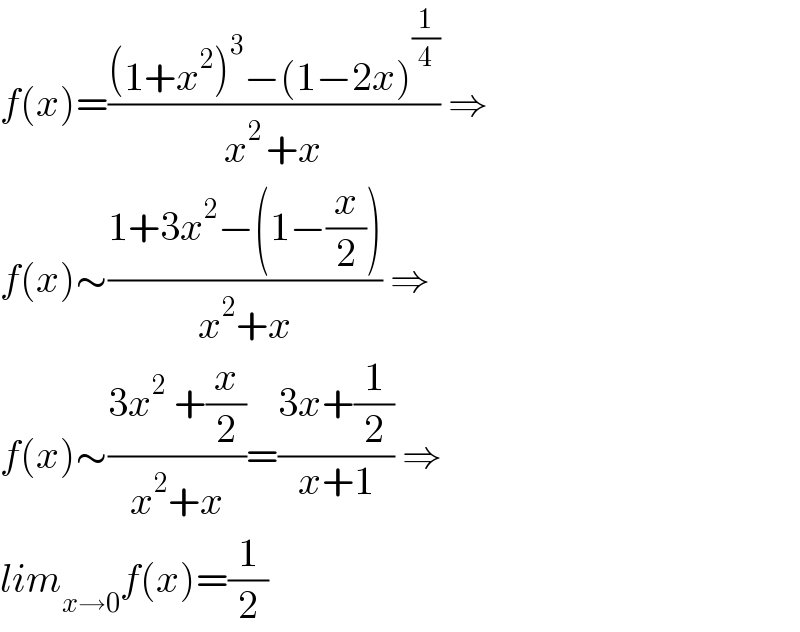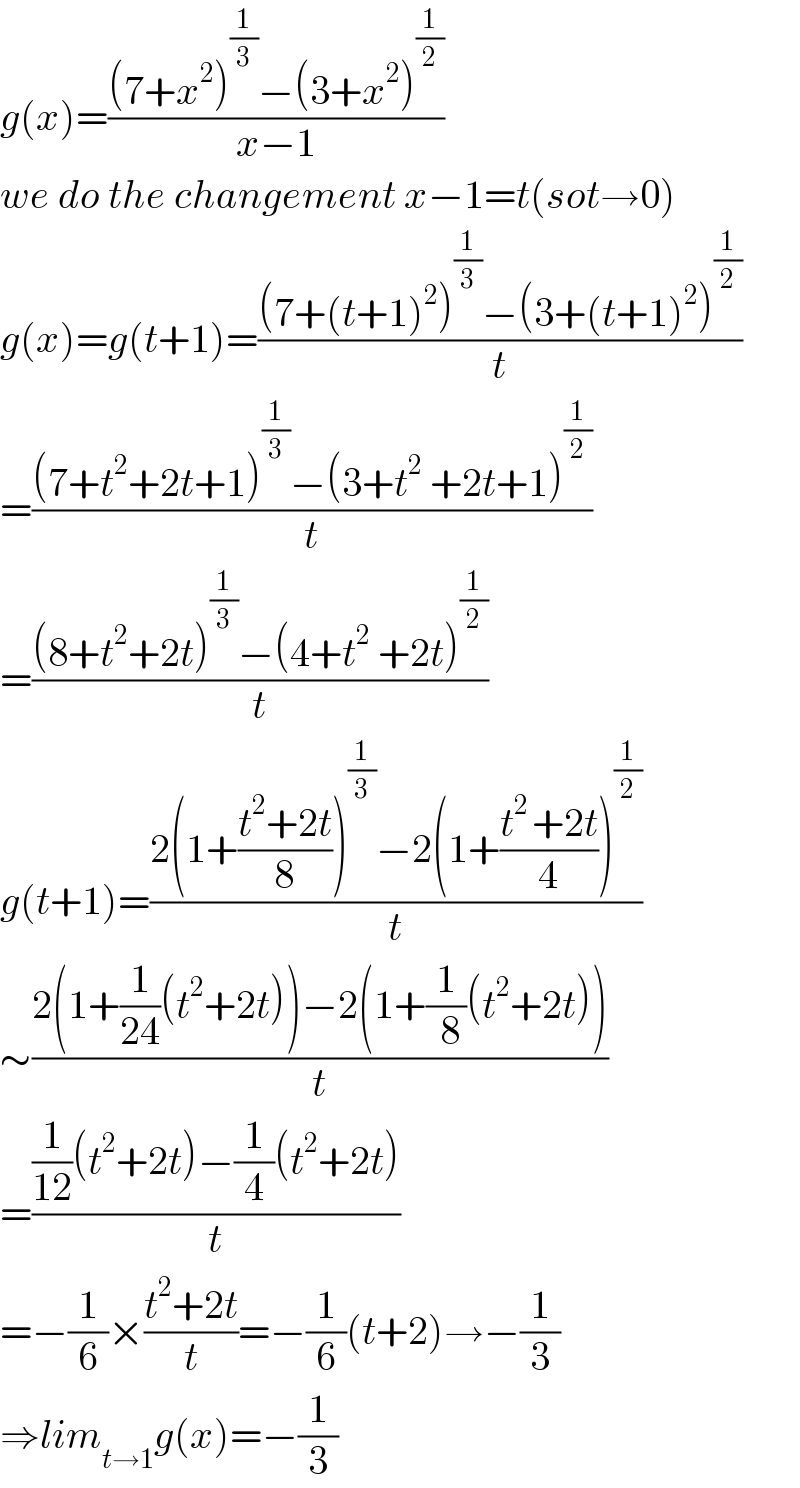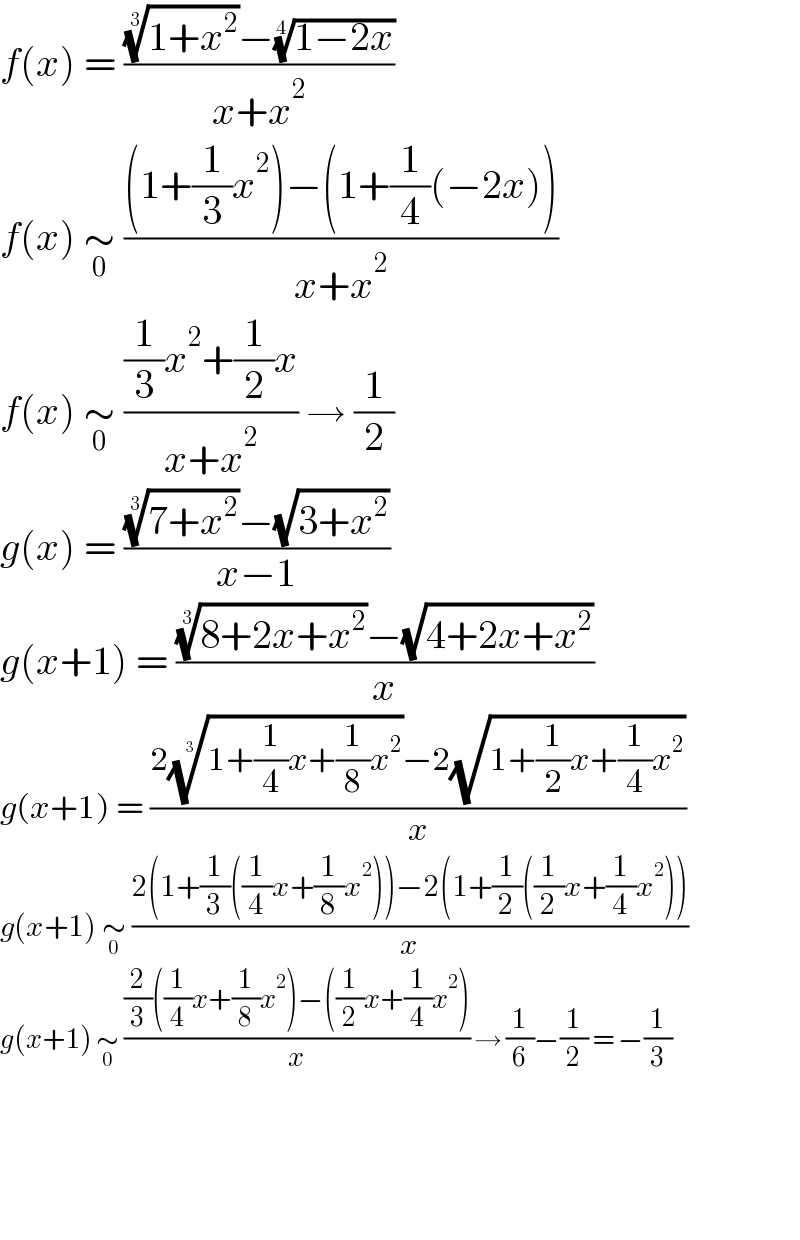
Question and Answers Forum
Question Number 143064 by EDWIN88 last updated on 09/Jun/21

Answered by bramlexs22 last updated on 09/Jun/21

Answered by Mathspace last updated on 09/Jun/21

Answered by Mathspace last updated on 09/Jun/21

Answered by Olaf_Thorendsen last updated on 09/Jun/21

